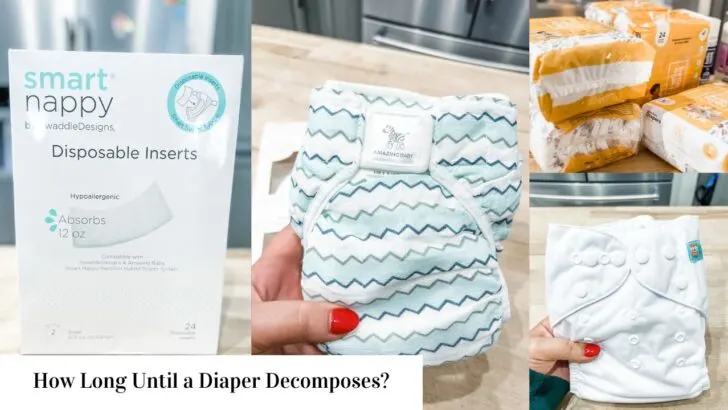Disposable diapers are a huge convenience in today’s world, but I’m sure every mom or dad has stopped to think at least once about what happens to a diaper when it’s thrown away.
We’ve all heard that disposable diapers can be a significant source of waste, but do you really know the extent of it? It’s not just the plastic packaging that takes hundreds of years to decompose.
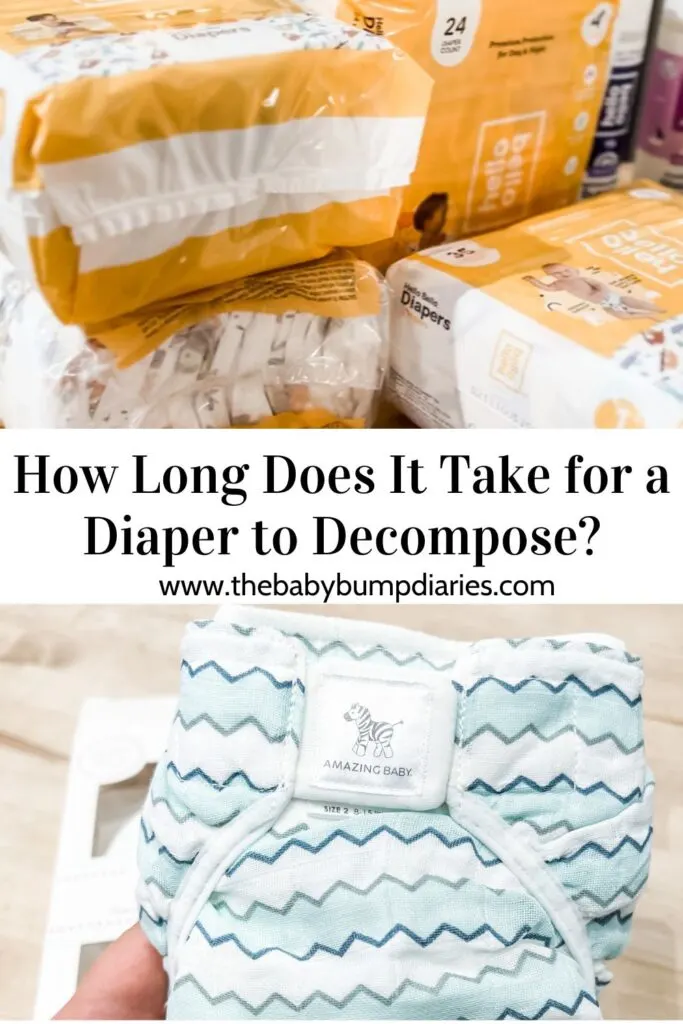
How long until a diaper decomposes?
Disposable diapers cause millions of tons of waste in landfills each year. And although the exact number is an estimate given that they have only been around for about 80 years, experts say diapers may take up to 500 years to decompose.
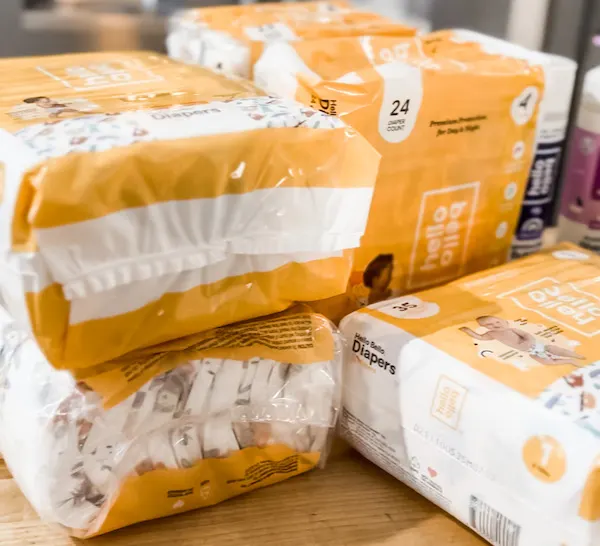
The good news is that diaper manufacturers seem to have heard these concerns and are changing things up to address them. Nowadays, there’s a trend toward more eco-friendly and biodegradable disposable diapers.
In order to get a full understanding, let’s take a look at the different diaper options out there, how long it takes for those options to decompose, and how diaper companies are moving in the right direction for the future.
Related: Do Diapers Expire? 5 Diaper Brands Spill the Tea
Types of diapers
When I had my son, I spent hours upon hours researching the best diaper. Not only did I want to make sure I was getting the best quality for his fresh little bum, but the type of diaper you choose for your baby can have a big impact on both your wallet and the environment, so I wanted to make sure I was making the right choice.
But if you’re worried about the environmental impact of disposable diapers but aren’t sure if you want to commit to cloth diapers, you’re in luck. It turns out, those are no longer the only two options.
The main diaper options are:
- Disposable diapers: The go-to for many parents because they’re easy to use, convenient, and generally affordable. The downside is the amount of waste that single-use diapers create that takes hundreds of years to decompose in our landfills.
- Reusable cloth diapers: Modern cloth diapers like these from ALVABABY have come a long way since the days of safety pins and plastic covers, and they are making a comeback due to their sustainability and affordability. The downside is that they generally require more time and effort to constantly launder dirty diapers.
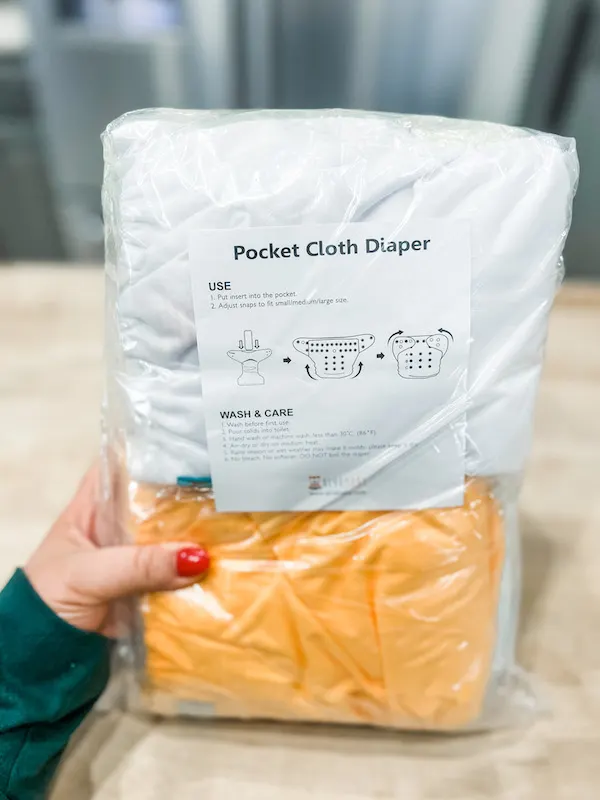
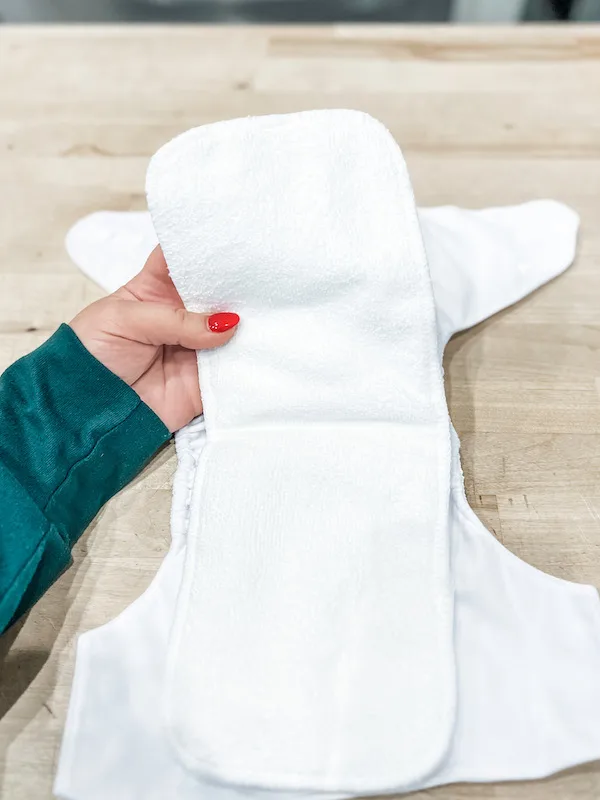
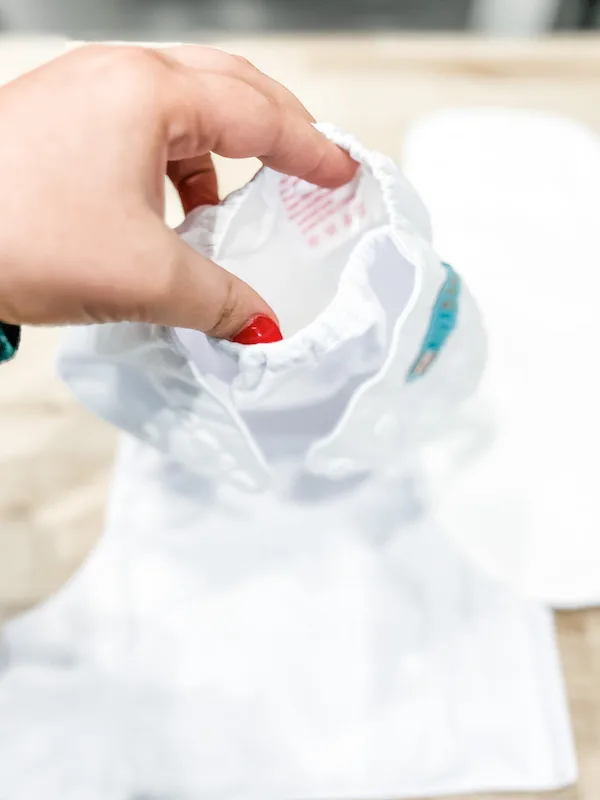
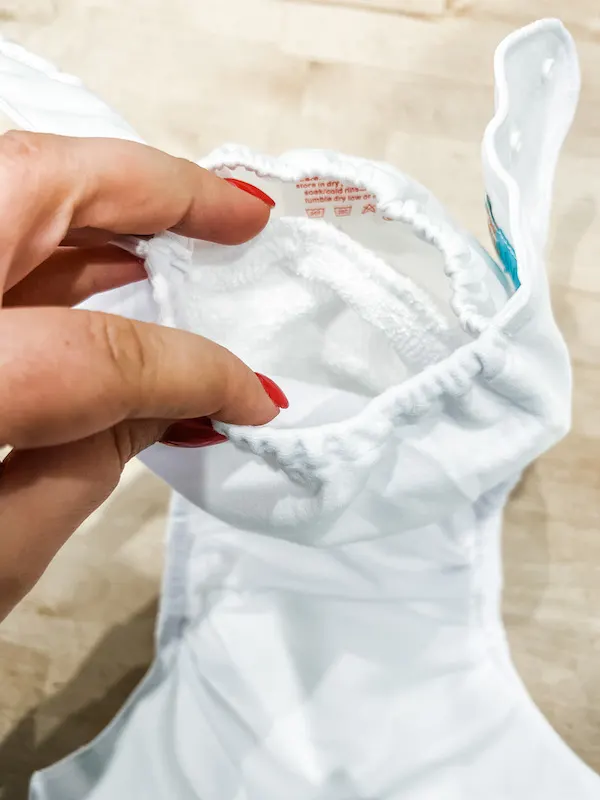
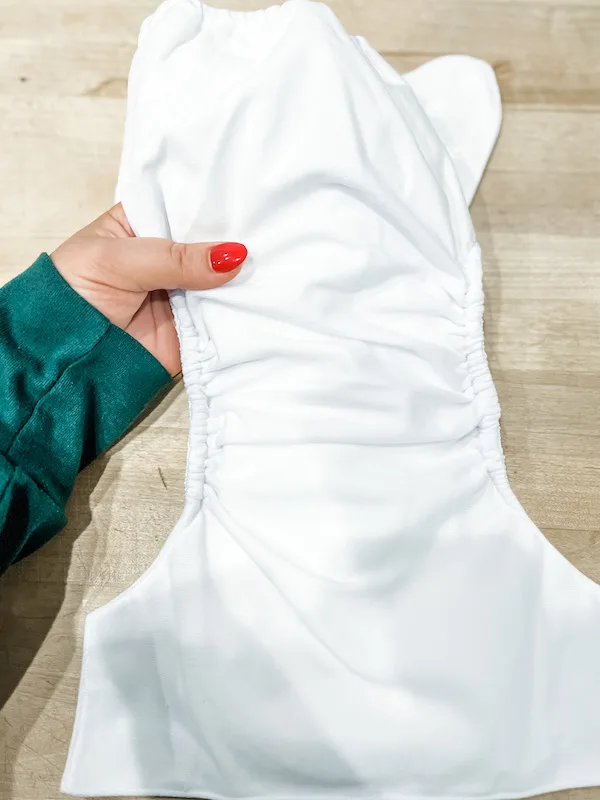
- A hybrid option: If you go with cloth diapers, but want an easier, more convenient cleanup, you can buy disposable inserts that you insert into your reusable cloth diapers and simply toss them when they are wet or soiled. These inserts would still end up in a landfill, but the idea is that they would take up less space, so I guess, a lesser evil. Also, you may be canceling out some or all of the savings you were shooting for by using cloth diapers.
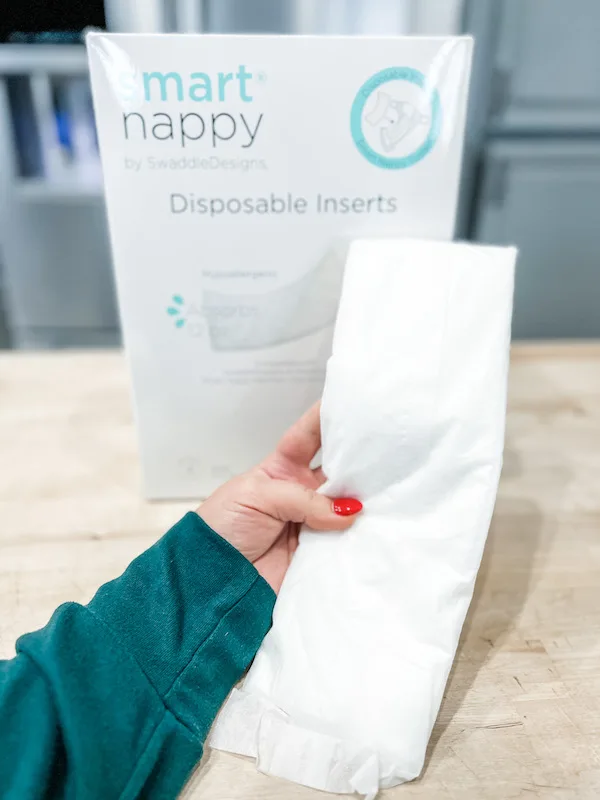
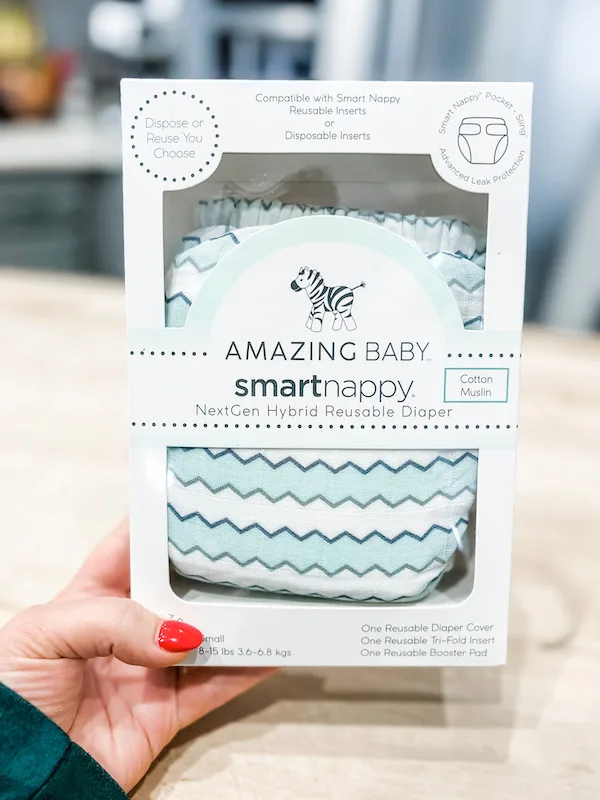
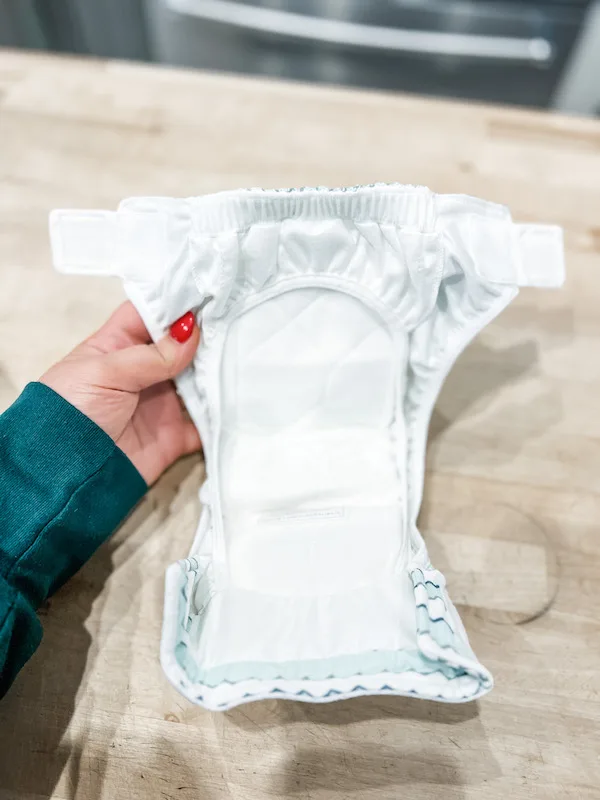
- Biodegradable disposable diapers: Many brands have come out with diapers that are made from sustainable materials that are meant to decompose in less time than traditional disposable diapers. They are starting to grow in popularity, but these come at a premium price tag. Some brands offer compostable diaper services where soiled biodegradable diapers can be picked up at your home for composting at a commercial facility, reducing plastic waste by millions of tons each year!
Ultimately, it’s up to you to decide which type of diaper best fits your lifestyle and budget, and yes, your decision will directly affect the environment.
Let’s take a look at a few of the factors that determine why it takes so long for disposable diapers to decompose.
Related: Pull-Ups vs Diapers: Differences + When to Switch
What are disposable diapers made of?
There are loopholes in the law that allow diaper manufacturers to avoid disclosing the ingredients of their diapers in the US. So, while some more eco-friendly brands have started to become transparent with their ingredients, a lot of the information is still hidden.
That’s really frustrating as a mom. How are we supposed to make the best decision for our little ones and the environment if we don’t have all the information?
Plus, with so many different brands out there that all claim to have the most absorbent diaper ever, the materials in them can vary greatly which means the risks for your baby, and their environmental impact will vary as well.
Diaper layers
In general, disposable diapers typically have three layers:
- The inner layer: This is the part that touches your baby’s skin so it’s probably the most important to get right. It is designed to be soft and absorbent, and it helps to keep the baby dry and comfortable. If the diaper company does not disclose what their inner layer is made of on their website or packaging, you can reach out to them and ask.
- The absorbent core: This layer is designed to absorb moisture and keep it away from your baby’s skin using SAPs (super absorbent polymers) that turn liquids into gel and fluff pulp which is a highly absorbent material made from wood pulp. Together, these materials create a highly absorbent core that can hold a significant amount of liquid.
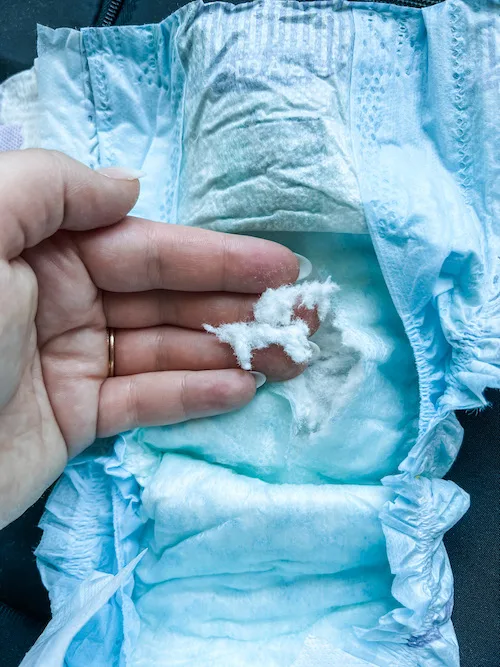
- The waterproof outer layer: This layer is typically made of a waterproof material such as polyethylene or polypropylene, which prevents the liquid in the diaper from leaking out. It seems like this would be one of the harder parts to make sustainable and effective at the same time since it needs to trap liquid.
The diapers may also include other ingredients like elastic leg cuffs, adhesive tapes for closure, and other materials for added comfort and convenience.
The environmental impact
So, what do those ingredients do to the environment?
Well, because of the materials used in their construction like the plastics in the outer layer and the super absorbent polymers, which are also plastics derived from petroleum, disposable diapers can have a huge impact on the environment.
When disposable diapers end up in a landfill, they sit there and contribute to the accumulation of waste for around 500 years while they decompose. In fact, according to an EPA report, over 4 million tons of plastic waste come from single-use diapers each year.
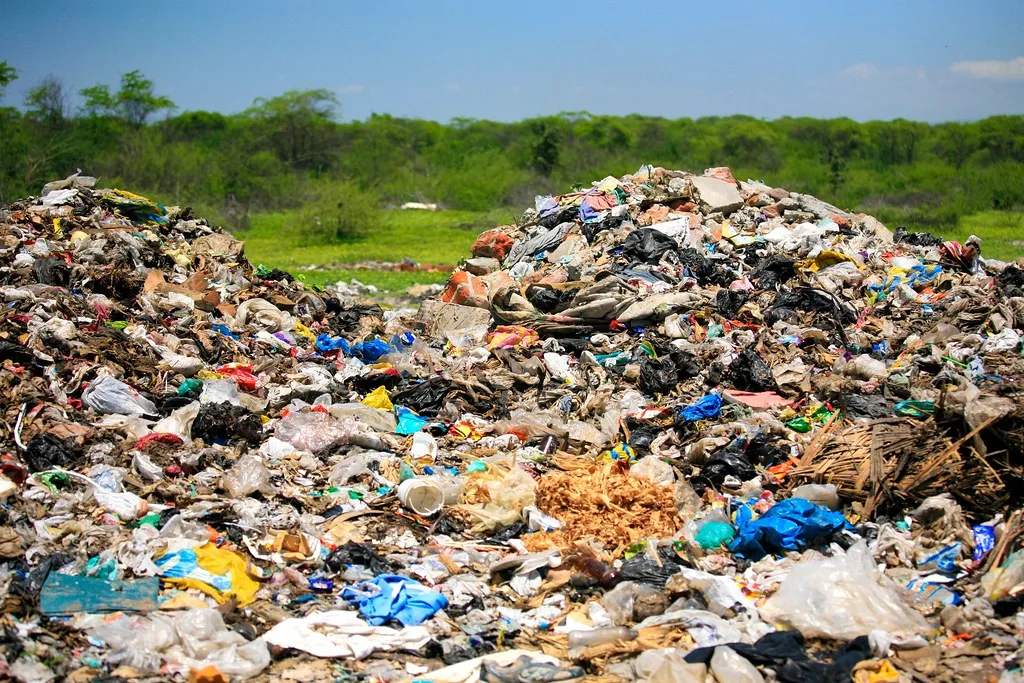
Additionally, while diapers are decomposing, they can release harmful chemicals such as dioxins, phthalates, and volatile organic compounds (VOCs) into the surrounding soil and groundwater, causing pollution and posing a potential threat to human health.
Eco-friendly solutions
Improving the biodegradability of the materials that are filling up our landfills is where a lot of diaper companies are going with their initiative.
For example, many have looked to plant-based biodegradable SAP like those developed by Tethis, a company that set out to tackle the sustainability of superabsorbents, which may be a good alternative to petroleum-derived SAP in traditional disposable diapers.
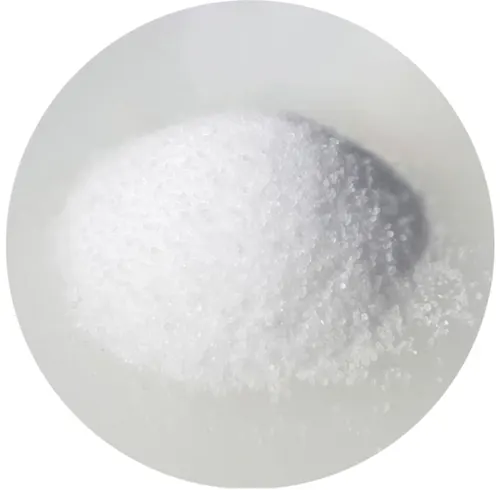
The other issue to tackle would be the plastics used in the waterproof outer lining. That’s hard to get rid of since the whole purpose of a diaper is to keep the wetness in.
So, reducing the use of plastic materials in disposable diapers is the key to decreasing the amount of time disposable diapers take to decompose.
Some eco-friendly diaper companies like Dyper and Honest Company use plant-based bioplastics which is a step in the right direction.
Do biodegradable diapers take less time to decompose?
Companies that make biodegradable diapers use plant-based materials like:
- Bamboo
- Cornstarch
- Eucalyptus
- Chlorine-free wood pulp
- Biodegradable plastics
- Natural adhesives
The good news is these ingredients also generally tend to be better for our baby’s delicate skin.
The claims that they decompose naturally may be a bit misleading. The truth is that no diaper is 100% biodegradable.
Even leading eco-friendly brand Coterie admits that all disposable diapers require synthetic components to prevent moisture from seeping through and ensure that they do not fall apart during use which means there is currently no disposable diaper that is completely biodegradable or organic.
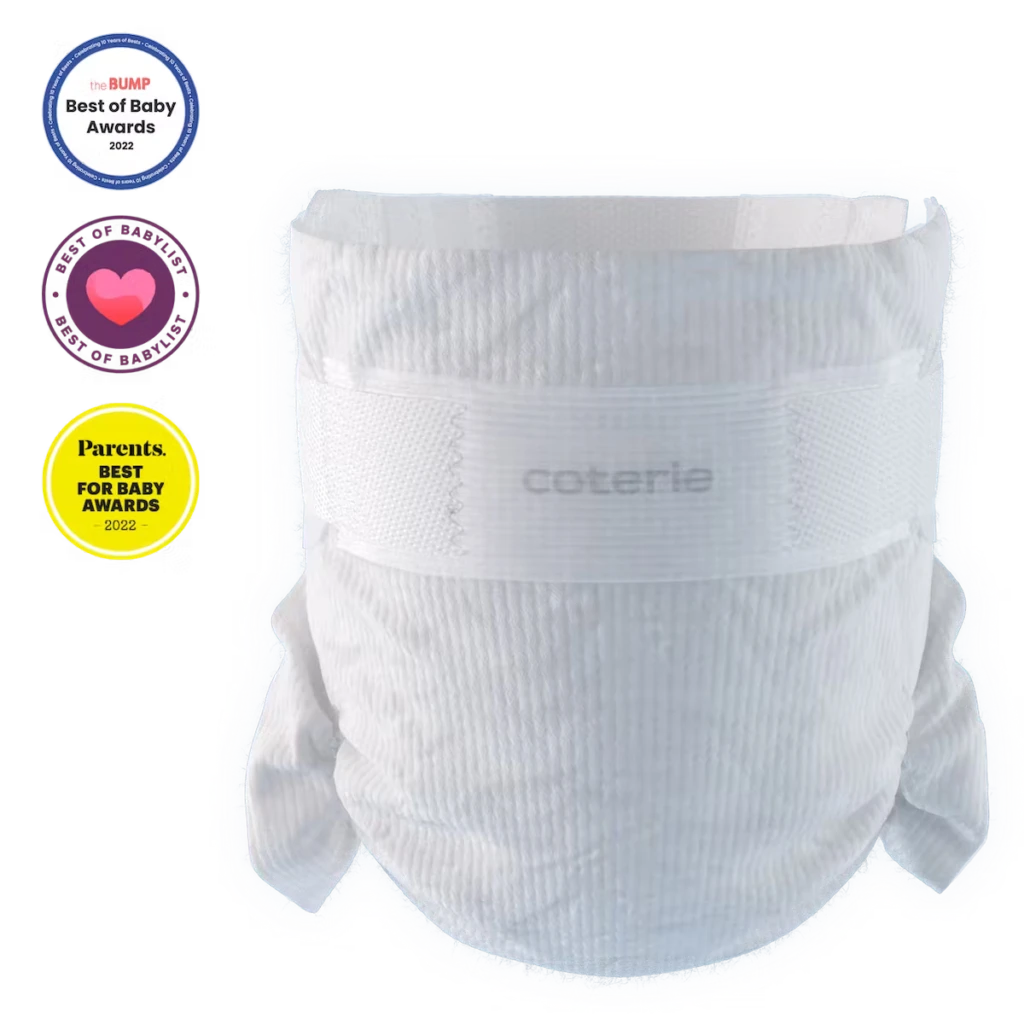
And while the rest of the components may be biodegradable, it requires an accelerated composting process to compost properly and that can only be done with very specific handling procedures and specific pre-processing steps.
Very few composting facilities in the US are properly licensed and equipped to handle this type of waste.
So the point is, if you aren’t properly disposing of the biodegradable diapers, they will end up in a landfill anyways and could still take years to decompose. But according to some experts, the decomposition rate of a biodegradable diaper in a landfill is more like 50 years rather than 500 years, so that’s good news.
Companies like Dyper offer compostable diaper services so you can send your soiled diaper off and they will take it to licensed facilities that can handle the necessary composting procedure.
According to their website, their diapers and wipes will be turned into soil in 14-16 weeks with their composting procedures. This, while it comes at an additional cost, is a huge step in the right direction.
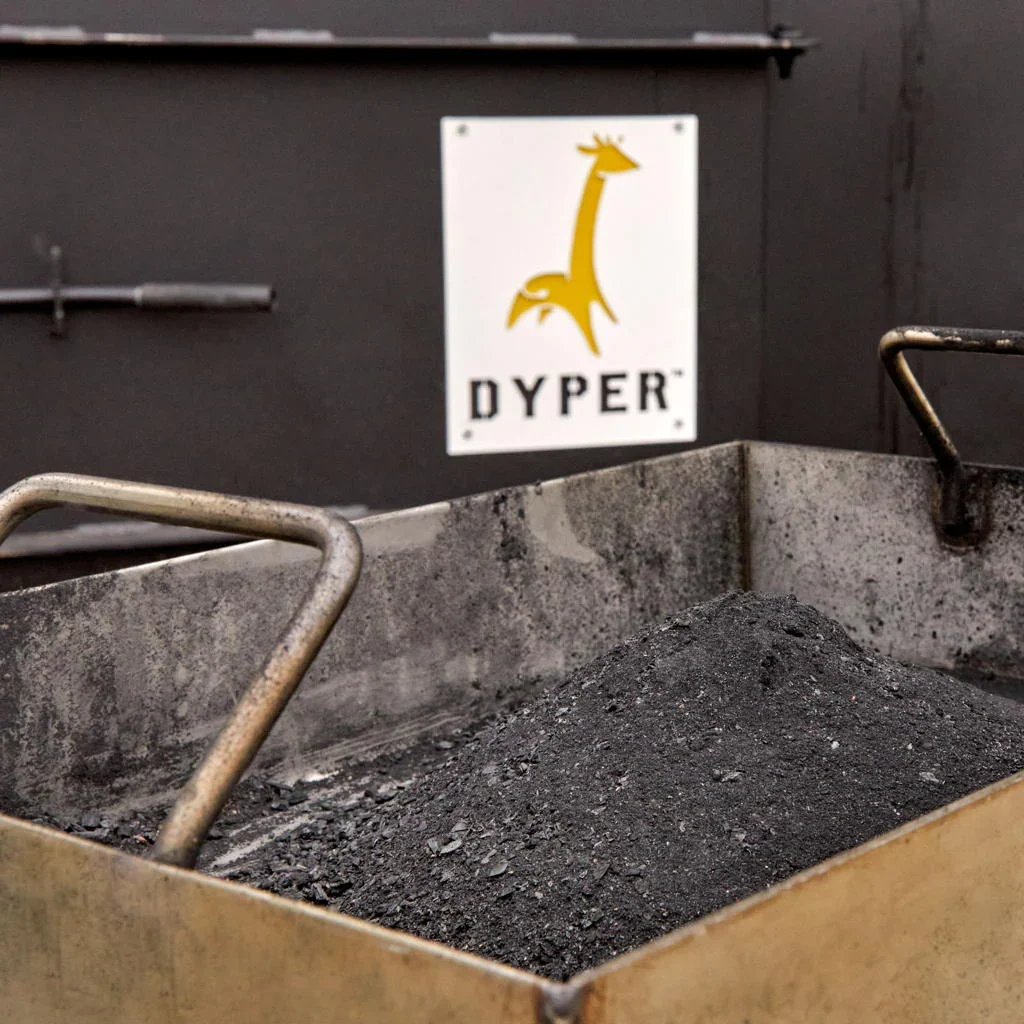
Overall, biodegradable diapers are designed to be more eco-friendly than traditional disposable diapers by using materials that can break down naturally but should be properly disposed of in order to decompose the fastest.
The cloth diaper dilemma
With all this in mind, it may seem like making the switch from disposable to cloth diapers is the way to go economically and environmentally.
But after you’ve accepted the initial cost of purchasing enough cloth diapers for you to be able to cycle through them, then you have to think about washing and caring for them properly. Those electric bills can shoot up fast and it’s not exactly energy efficient.
Experts have come to the conclusion that whether or not cloth diapers are more eco-friendly than disposable diapers greatly depends on the way you handle washing and drying them due to the energy used in the process.
I guess the best thing to do if you use cloth diapers would be to conserve energy and wash them in full loads, but that would require having a very large stock of cloth diapers on hand. Or you could wash them with other clothes but yikes, who wants to do that?
Can you recycle disposable diapers?
Unfortunately, you cannot recycle disposable diapers.
Diapers are not accepted in most curbside recycling programs because of their complex composition of materials and the contamination of bodily waste.
While some materials in disposable diapers, such as plastic and paper, can technically be recycled, the presence of bodily waste makes it difficult to recycle them.
Fortunately, there are some companies and initiatives that are working on developing technologies to recycle disposable diapers – or at least part of them.
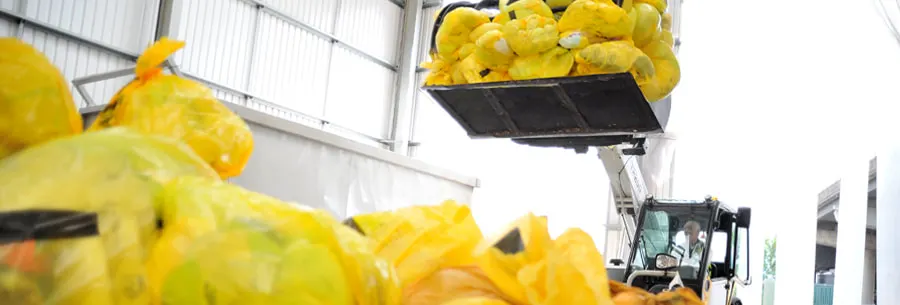
For example, Canadian company Knowaste has developed a process that can recycle the plastic, paper, and SAP materials from disposable diapers into sanitized reusable paper pulp and plastic components. This process involves sterilizing and shredding the diapers to separate the materials and remove contaminants.
I suppose this would require a specific manner of disposal, too, similar to the compostable diaper collection services offered by Dyper, although it was unclear exactly how the company uses its technologies.
Conclusion
It’s great to see that more diaper companies are starting to care about the ingredients in their diapers for the safety of our babies and the environment. And at least the ingredients are getting better and more transparent.
Wipes on the other hand, seem to have already made it past the hurdle because there are a lot of 100% biodegradable wipes out there. But that’s a topic for another day.
As more parents are looking for eco-friendly and sustainable diaper options, we can expect to see even more companies making changes to use fewer materials to reduce their impact on the environment.
And that’s a good thing for our babies and the planet.
Further Reading: 20 Things To Put In A Diaper Caddy

Jamye Molina is a mompreneur and the creative mind behind Molina Writing Co. Her writing has been featured on several parenting blogs, where she shares her first-hand experience with motherhood. When she’s not writing, you’ll find her traveling or enjoying the simple joys of life with her husband and toddler.

